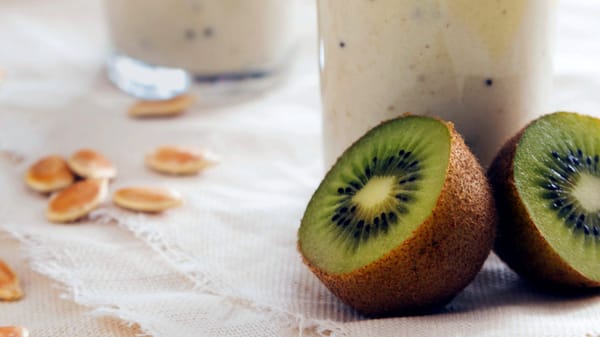Nutrition and Movement on a Keto Diet

A well-planned keto diet can be an effective way to lose weight and improve overall health. However, it's essential to combine it with regular body movement to achieve optimal results.
In this article, we'll explore the relationship between nutrition and movement on a keto diet and provide guidance on how to make the most of this lifestyle choice.


Keto Diet Basics
The keto diet is a high-fat, low-carbohydrate, moderate-protein diet that has been shown to promote weight loss and improve blood sugar control. At its core, the keto diet is a metabolic shift from relying on glucose for energy to relying on ketones, which are produced by the liver from fat breakdown. Macronutrient ratios are a crucial aspect of the keto diet.
A typical keto diet consists of:
* Fat: 70-80% of daily calories
* Protein: 15-20% of daily calories
* Carbohydrates: 5-10% of daily calories
The role of macronutrients in the keto diet is as follows:
* Fats are the primary source of energy on the keto diet. They are broken down into ketones, which are then used by the body for energy.
* Protein is important for maintaining muscle mass and overall health. However, excessive protein intake can kick the body out of ketosis.
* Carbohydrates are limited on the keto diet, as they can prevent the body from entering a state of ketosis. Common foods to eat on the keto diet include:
- Fatty fish (salmon, tuna, mackerel)
- Meat (beef, pork, lamb)
- Eggs
- Full-fat dairy (cheese, butter, cream)
- Vegetables (dark, leafy greens, broccoli, cauliflower)
- Nuts and seeds (almonds, walnuts, chia seeds)
Common foods to avoid on the keto diet include:
- Sugary foods (candy, cakes, cookies)
- Grains (bread, pasta, rice)
- Legumes (beans, lentils, peanuts)
- Starchy vegetables (potatoes, corn, peas)
- Fruit (except for small portions of berries and citrus fruits)
The keto diet can help with weight loss by:
* Reducing insulin levels and increasing fat breakdown
* Increasing satiety and reducing hunger
* Improving blood sugar control and reducing the risk of chronic diseases
Overall, the keto diet is a powerful tool for weight loss and improved blood sugar control. By understanding the core principles of the keto diet and making informed food choices, individuals can achieve optimal results and improve their overall health.

Nutrition for Movement
Proper nutrition is essential for movement and exercise on a keto diet. The three primary macronutrients - protein, carbohydrates, and fats - play a crucial role in energy levels and physical performance. When it comes to energy production, carbohydrates are the primary source of fuel for the body. However, on a keto diet, the body is adapted to use fats as the primary source of energy.
This means that the body relies heavily on fat for fuel during exercise, making it essential to consume enough fats to support physical activity.

Protein is also crucial for movement and exercise on a keto diet. It helps to build and repair muscle tissue, which is essential for physical performance. Adequate protein intake also helps to prevent muscle breakdown during exercise. To fuel the body before, during, and after exercise, it's essential to consume the right foods and snacks. Here are some keto-friendly options:
- Before exercise: Eat a balanced meal that includes fats, protein, and low-carb vegetables. Examples include avocado and bacon omelets, or grilled chicken with olive oil and vegetables.
- During exercise: Consume snacks that are high in fats and low in carbohydrates. Examples include nuts, seeds, and cheese.
- After exercise: Eat a meal that includes protein and fats to help with muscle recovery. Examples include grilled salmon with olive oil and vegetables, or a protein shake with coconut oil and heavy cream.
Here are some additional nutrition tips for movement on a keto diet:
- Stay hydrated by drinking plenty of water and electrolyte-rich beverages.
- Consume enough electrolytes to help regulate fluid balance and prevent muscle cramps.
- Avoid consuming high-carbohydrate foods before exercise, as they can cause a spike in blood sugar levels and disrupt ketosis.
- Experiment with different foods and snacks to find what works best for your body and physical performance.
In addition to consuming the right foods and snacks, it's also essential to pay attention to portion sizes and macronutrient ratios. Aim to consume a balanced diet that includes:
- 70-80% of calories from fats
- 15-20% of calories from protein
- 5-10% of calories from carbohydrates
By following these nutrition tips and consuming the right foods and snacks, you can optimize your body for movement and exercise on a keto diet.
Exercise and Movement on a Keto Diet
Regular exercise and movement are essential components of a keto diet, offering numerous benefits for overall health and well-being. By incorporating physical activity into your daily routine, you can improve cardiovascular health, increase muscle mass, and enhance mental clarity. In this chapter, we will explore the best types of exercises for a keto diet and provide guidance on how to incorporate physical activity into your daily life.

21 Easy And Healthy Keto Recipes You Need To Try!
Learn To Cook & Taste New Healthy Keto Recipes With A Free Cookbook. Download Now.
Benefits of Exercise on a Keto Diet
Exercise on a keto diet can have numerous benefits, including:
- Improved cardiovascular health: Regular exercise can help lower blood pressure, improve circulation, and increase overall heart health.
- Increased muscle mass: Resistance training can help build muscle mass, which can further enhance metabolism and weight loss.
- Enhanced mental clarity: Exercise has been shown to improve cognitive function and reduce stress levels.
- Improved insulin sensitivity: Regular exercise can help improve insulin sensitivity, reducing the risk of developing type 2 diabetes.
Best Types of Exercises for a Keto Diet
When it comes to exercise on a keto diet, some types of exercises are more effective than others. Here are two of the best types of exercises to consider: High-Intensity Interval Training (HIIT): HIIT involves short bursts of high-intensity exercise followed by brief periods of rest. This type of exercise has been shown to be highly effective for weight loss and improving cardiovascular health. Strength Training: Strength training involves using weights or resistance to build muscle mass. This type of exercise can help improve overall muscle strength and endurance.
Incorporating Physical Activity into Daily Life
Incorporating physical activity into your daily life can be easy and convenient. Here are some examples of bodyweight exercises and outdoor activities that you can try:
- Bodyweight exercises: Squats, lunges, push-ups, and planks are all great examples of bodyweight exercises that can be done at home or on the go.
- Outdoor activities: Walking, jogging, cycling, and swimming are all great outdoor activities that can be done for free or at a low cost.
Warm-up and Cool-down Routines
It's essential to include warm-up and cool-down routines in your exercise routine to prevent injury and promote recovery. Here are some examples of warm-up and cool-down exercises you can try:
- Warm-up exercises: Jumping jacks, jogging in place, and dynamic stretching can all help get your heart rate up and prepare your muscles for exercise.
- Cool-down exercises: Static stretching and foam rolling can help reduce muscle soreness and promote recovery.
Importance of Rest and Recovery Rest and recovery are essential components of any exercise routine. Adequate rest and recovery can help promote muscle growth and repair, reducing the risk of injury and burnout. Make sure to include rest days in your exercise routine and prioritize recovery techniques such as foam rolling and static stretching.

Conclusions
In conclusion, a well-planned keto diet combined with regular body movement can lead to significant improvements in overall health and well-being. By understanding the basics of the keto diet, fueling the body with the right foods, and incorporating physical activity into daily life, individuals can achieve optimal results and maintain a healthy lifestyle.
Remember to always consult with a healthcare professional before making significant changes to your diet or exercise routine.




